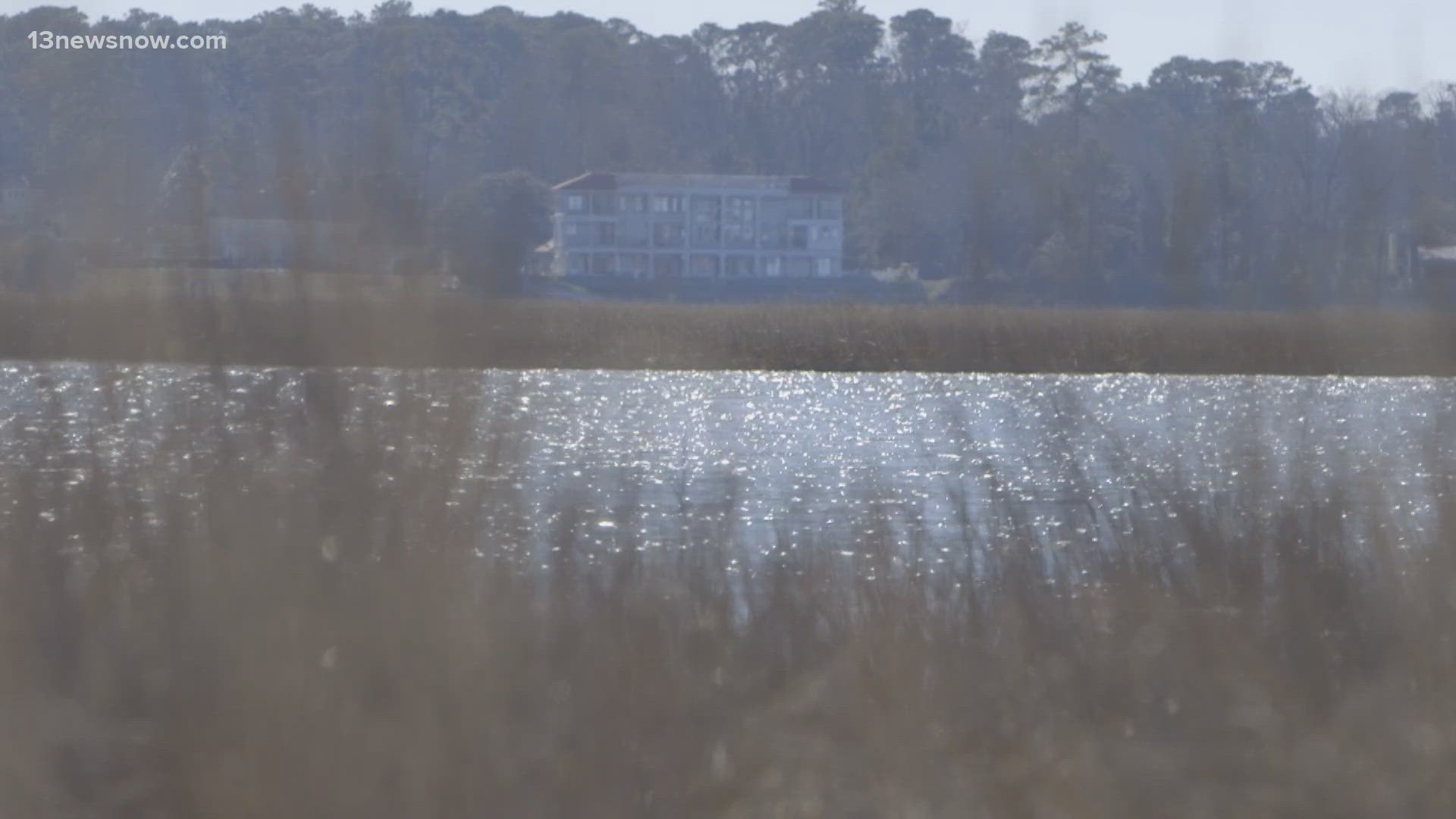NORFOLK, Va. — They are a calm but critical resource for our environment and the people living in it.
Marshes, swamps, and grassy waters all along our coastlines make up the ecosystem known as Virginia’s wetlands.
These saturated areas play an important role in filtering pollution and sucking up carbon, and as the sea level continues rising, it’s going to get harder and harder for these areas to soak up salt water from the ocean that can poison our trees.
A new study by Norfolk non-profit Wetlands Watch and NASA estimates Virginia will lose nearly 80% of its wetlands by the turn of the century.
The analysis focused on Hampton Roads and found that a retreat inland is already underway for wetlands in parts of Norfolk. But in many areas, there isn’t as much room for them to move, which will lead to an inevitable end for plant life living in them.
NASA provided a timelapse outlook showing what could happen over the next 75 years.
The wetlands, shown in light blue, will move further and further inland and disappear along the way.
What is the direct effect on our day-to-day lives as humans? This decline will make it difficult to maintain our most critical resource — safe drinking water. Without the filtering benefits of marshes, maintaining water quality requirements will become a daunting task.
While the study provides a distant 75-year outlook, researchers believe the bulk of our losses will happen over the next 30 years.
The study also found that if significant action is taken right now to preserve wetlands, Virginia would still lose about 40% of its ecosystem by 2100.

